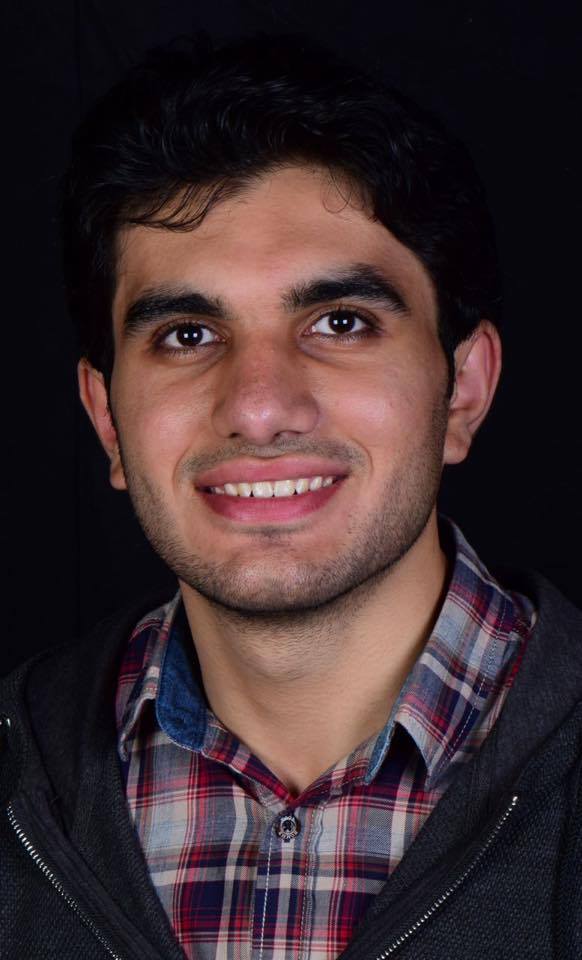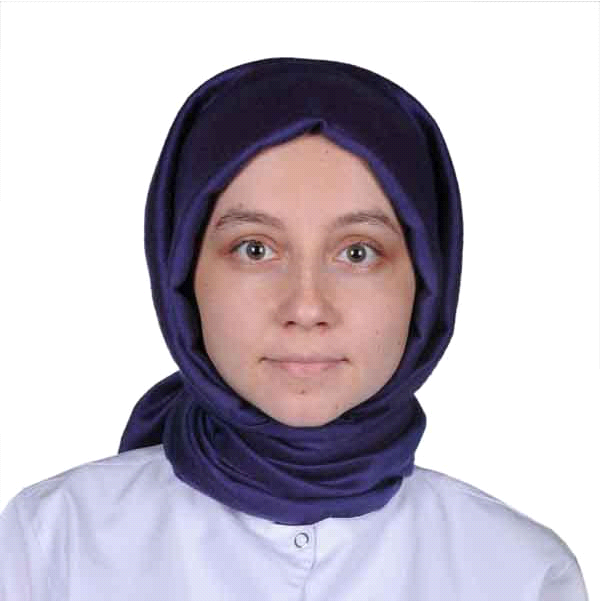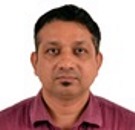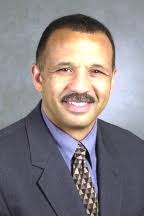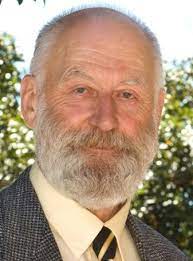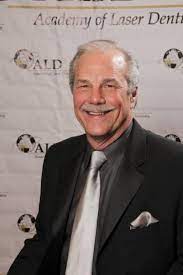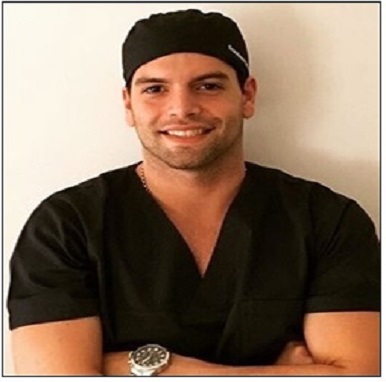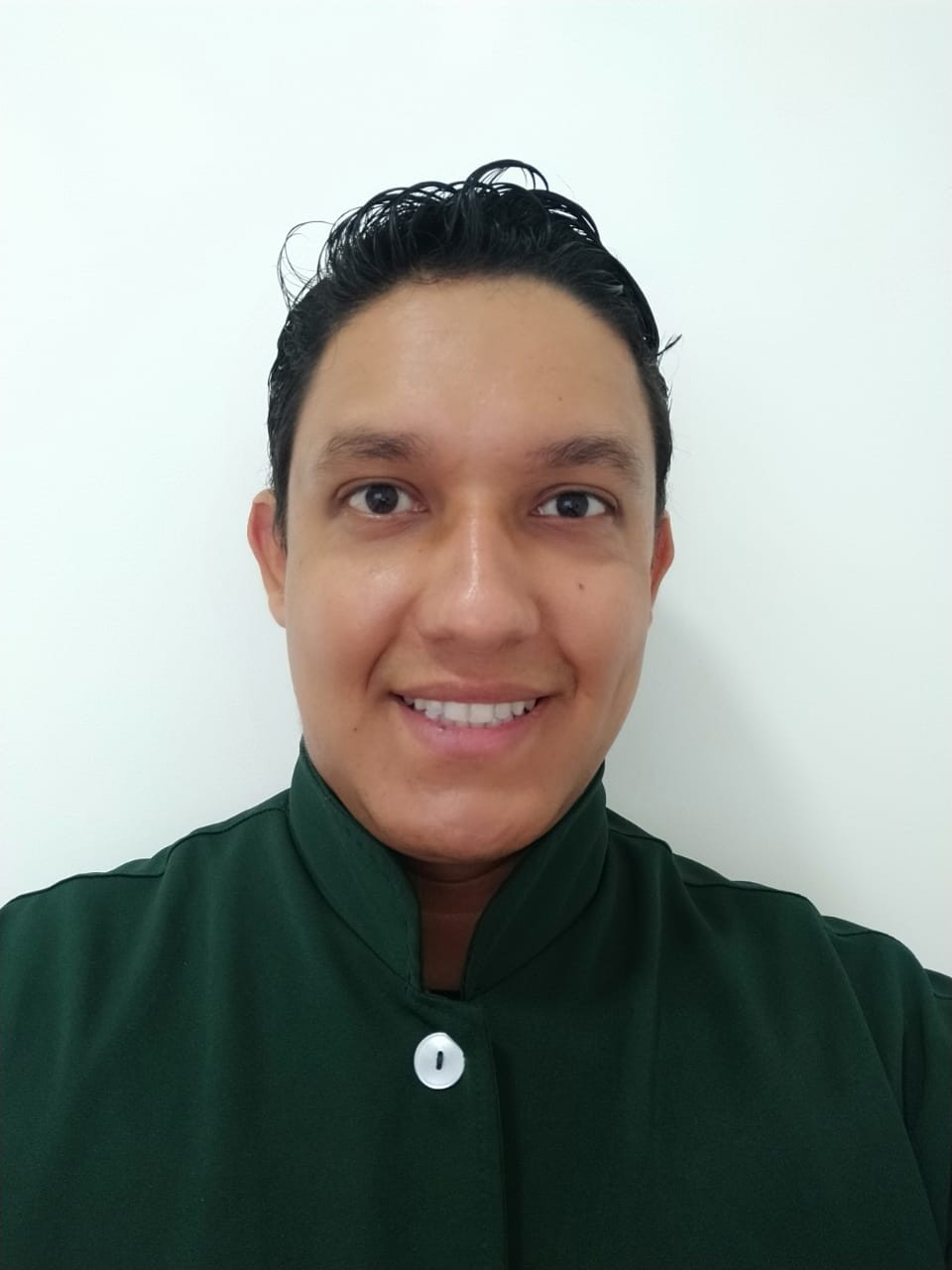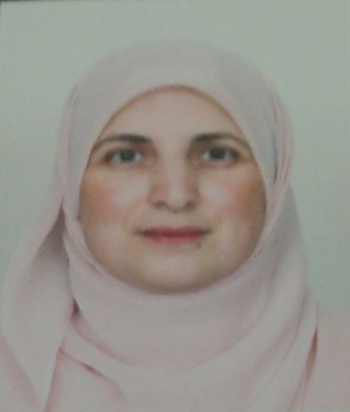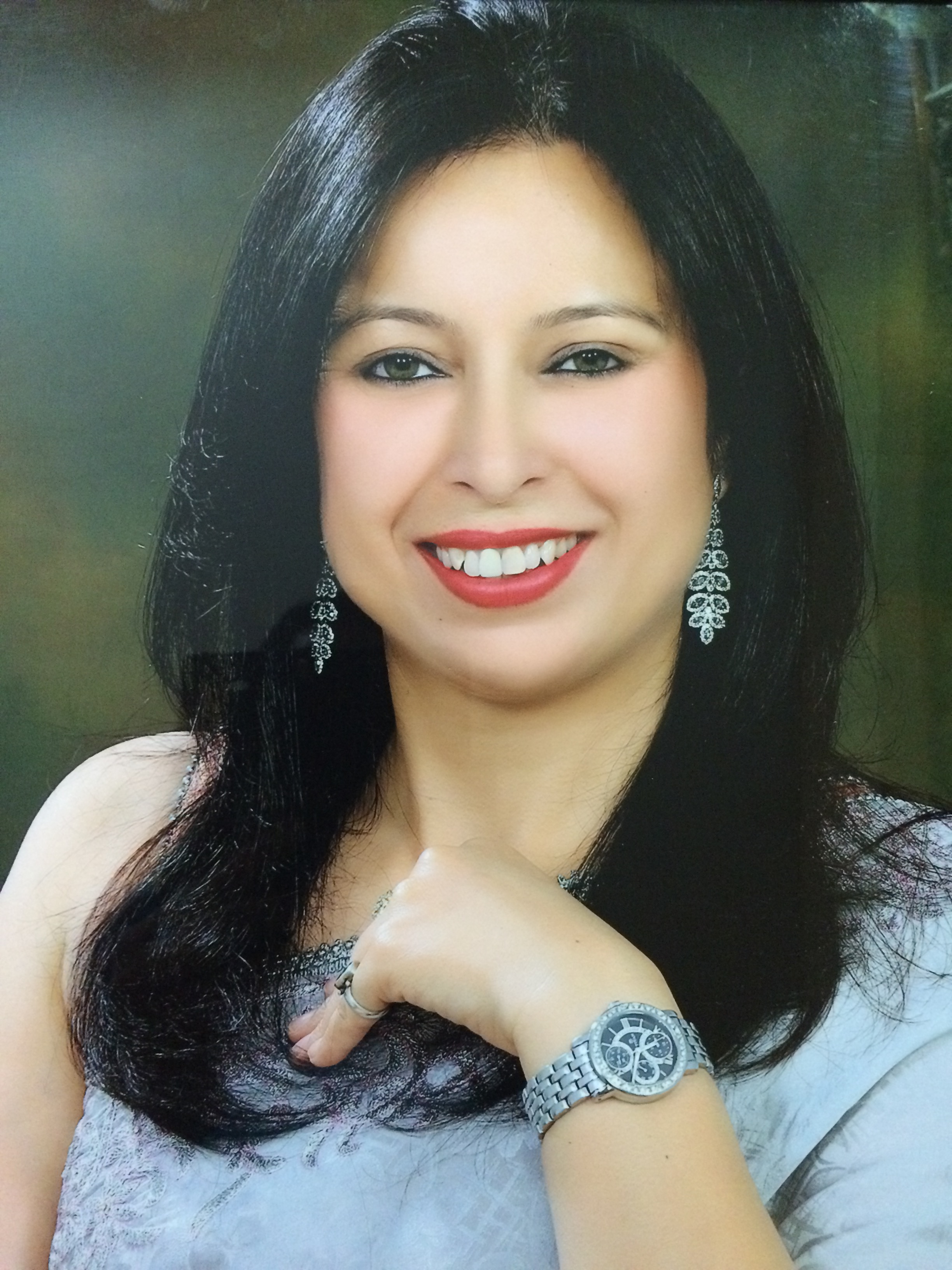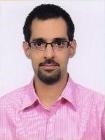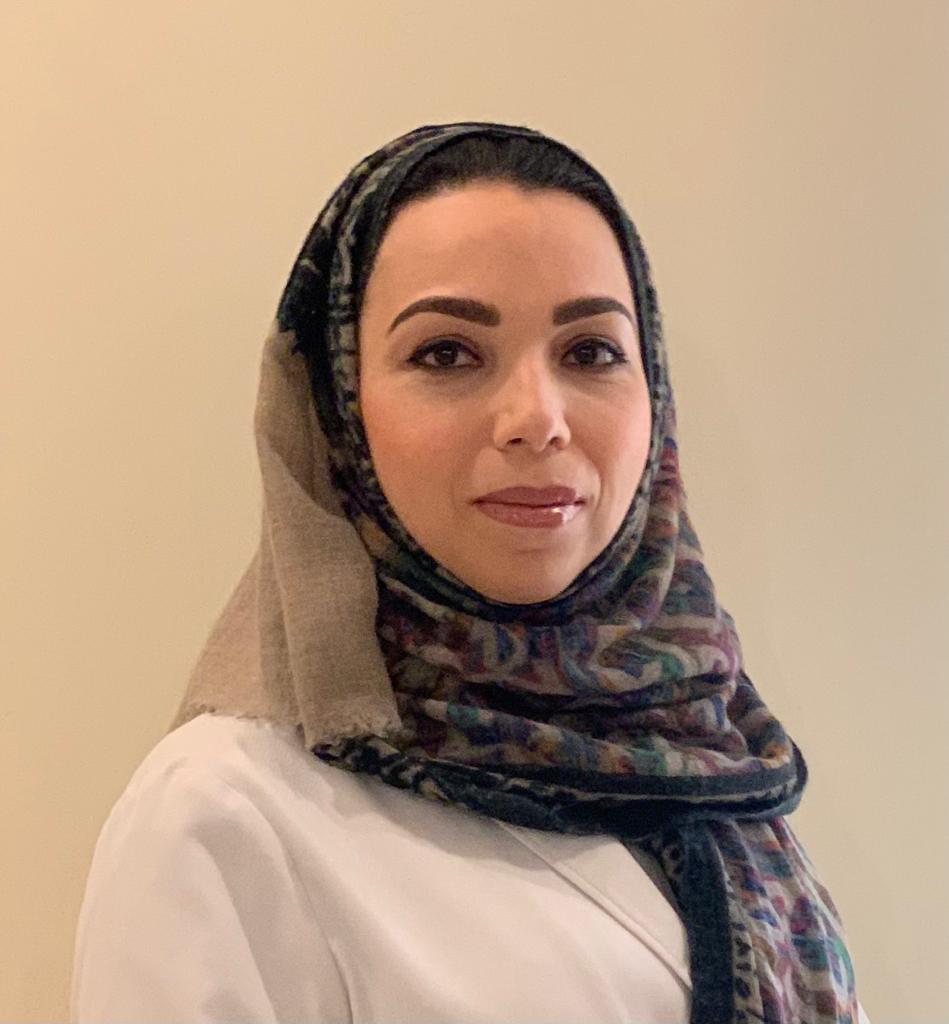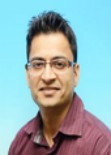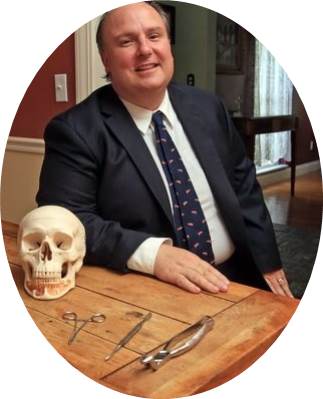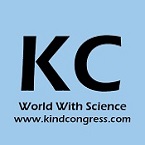Theme: Exploring the possibilities in shaping the Future of Dental Health and Oral Health
Dental Research and Health 2022
Conference series LLC would like to take the immense pleasure to announce the 44th International Conference on Dental Research and Oral Health (Dental Research & Health-2022) during November 07-08, 2022, Paris, France. Where in most distinguished line up of eminent keynote speakers from around the globe will lead a dynamic scientific program of plenary sessions, symposia and hands-on workshops to share their expertise with our audience.
“Exploring the possibilities in shaping the Future of Dental Health and Oral Health” is the driving theme of the Dental Research & Health-2022, which will most definitely be reflected in the conference program, where we expect a remarkable turnout of world-renowned speakers.
Dental Research & Health-2022 will deliver new ideas, convictions, strategies and tactics to excel in the field of dentistry and oral health. Dental Research & Health-2022 will offer an impressive roaster of keynote speakers, quality attendees, compelling content and concise reviews of the latest clinical advancements and guidance relating to the diagnosis and treatment of dental and oral health conditions, including the use of new techniques.
Attendees at Dental Research & Health-2022 will have unique opportunity to meet with leaders of the Dental and Oral Health profession from around the globe to discuss all of the scientific and technical breakthroughs that are changing the landscape of dentistry and fulfill their continuing education and professional development requirements.
Dental Research & Health-2022 welcome attendees from all leading Dental clinics, Dental universities, clinical research institutions and Dental companies to share their research experiences on all aspects of this rapidly expanding stream and thereby, providing a showcase of the latest research and provide a better health care to the world. This is designed for practicing Dentists, nurses, physicians in training and other Oral healthcare professionals interested in the latest advances and techniques in the field. Another segment of participants are Dental researchers, Dental educators, Clinical organizations, Educational institutes, and Business leaders in the health sector worldwide.
Track 1: Teledentistry
Teledentistry is the use of communication technology, including audio and video interaction, to remotely provide dental care services such as consultation, diagnosis, and patient education, according to the American Teledentistry Association. Learn more about the different ways teledentistry provides dental care and its potential role in clear aligner treatment. Through Teledentistry, “Dentists can meet their patients virtually in order to evaluate their conditions, present treatment plans, offer Dental education, prescribe medication, and meet for pre-op and post-op appointments,” Mahnaz Rashti, DDS, a periodontist in Beverly Hills, tells WebMD Connect to Care. This assures that the patient can see their Dentist in a timely manner without needing to physically be in the office,” Rashti says.
According to the American Dental Association, Teledentistry is usually provided in four different ways:
- Live video (synchronous): This involves live, two-way interaction between a patient and their dental health expert via video call.
- Store and forward (asynchronous): This involves the transfer of recorded Health information like Photographs, x-rays, and digital impressions to providers via a secured communication channel.
- Remote patient monitoring (RPM): This form of monitoring collects your personal Dental health information at one location and securely transmits it electronically to a practitioner at another location, for use in future dental care.
- Mobile health (mHealth): This form of teledentistry uses mobile devices like smartphones, tablets, computers, and personal digital assistants to provide Dental health education to the public.
Track 2: 3D printing in Dental Health
3D printing include the production of drill guides for Dental implants, the production of physical models for Prosthodontics, Orthodontics and surgery, the manufacture of Dental, Craniomaxillofacial and orthopaedic implants, and the fabrication of copings and frameworks for implant and Dental restorations. Dental 3D printers feature a light or laser that polymerizes a liquid with the computer-guided precision required to produce small objects with intricate details. The Dental 3D printing workflow has four-steps: Scan – collect a digital impression with an intraoral scanner. Send the scans to a lab or to a design station. Today, two 3D printing technologies are common in Dental and Orthodontic practices and labs: stereolithography (SLA) and digital light processing (DLP).
Track 3: Virtual Reality-Artificial intelligence in Dental Research
Virtual reality (VR) has the ability to remove the association of fear, pain, and anxiety during patients' Dental visits, and the results have been positive. VR will immerse your patients into other worlds. They can view scenes that will help them feel relaxed and calm during a procedure.Virtual reality technology is used to create immersive experiences that can help educate and even entertain consumers. Outside of its popular gaming use case, virtual reality is applied in a variety of industries, such as Medicine, Architecture, Military, and others. Visualization – Users can experience the best quality of visualization by wearing a headset and can create a realistic world. Education – By using virtual reality, students can interact easily with teachers for learning. Virtual reality has made watching more enjoyable than reading. Three elements of VR, i.e., life-size 3D space, real-time interaction, and self-projection
AI in healthcare is an umbrella term to describe the application of machine learning (ML) algorithms and other Cognitive technologies in medical settings. In the simplest sense, AI is when computers and other machines mimic human cognition, and are capable of learning, thinking, and making decisions or taking actions. AI models can also look at these images and determine the structure, measurements, Tissue viability, and even potential success of treatment for those out-of-sight portions of the tooth. Deep learning algorithms can then detect, locate, and classify different aspects of Tooth root anatomy and possible pathologies.
Track 4: Dental Education and Training
Basic Dental education involves the teaching and learning of the future generations of Dentists to prevent, diagnose and treat oral diseases and meet the Dental needs and demands of the individual patients and the public. Oral health education is effective in improving the knowledge attitude and practice regarding oral health and in reducing the plaque, bleeding on probing of the gingival and caries increment and in improving the gingival health. Dentists diagnose and treat Dental issues and help patients develop better oral hygiene regimens. They clean teeth, correct bite issues, perform surgeries and extractions, and perform other duties to ensure that the teeth and mouth are healthy. Oral health education is referred to as the process of provision of the oral health information in such a way to the people that they apply the principles daily to everyday living. Oral health education helps to develop desirable dental health attitude and habits.
Duties
- Remove decay from teeth and fill cavities.
- Repair or remove damaged teeth.
- Place sealants or whitening agents on teeth.
- Administer anesthetics to keep patients from feeling pain during procedures.
- Prescribe antibiotics or other medications.
Track 5: Dental Robotics
Robotics is a disruptive technology that will change diagnostics and treatment protocols in Dental medicine. Robots can perform repeated workflows for an indefinite length of time while enhancing the overall quality and quantity of patient care. Early Robots required a human operator, but Robotic systems have advanced significantly over the past decade, and the latest medical Robots can perform patient intervention or remote monitoring autonomously. However, little research data on the therapeutic reliability and precision of autonomous robots are available. The present paper reviews the promise and practice of robots in dentistry by evaluating published work on commercial Robot systems in Dental Implantology, Oral and Maxillofacial surgery, Prosthetic and restorative Dentistry, Endodontics, Orthodontics, oral radiology as well as dental education. In conclusion, this review critically addresses the current limitations of Dental robotics and anticipates the potential future impact on Oral Healthcare and the dental profession.
Robots are not used as extensively in Dentistry as in medicine. Dentistry employs a few manual Robotic systems that are managed manually via the control interface of the computer. Manual robots can provide safer and more accurate drilling than traditional Rentistry. Progress is being made towards autonomous Robots in implant dentistry, but the few promising Robotic systems are not yet available to Dentists. High acquisition cost and innate intricacy of the robotic hardware and methods must be overcome before robots will become commonplace in Dental practice.
Track 6: Restorative Dentistry
Restorative Dentistry refers to any Dental procedure that repairs or replaces a tooth. Restorative procedures include cavity fillings, Root canals, and even Dental implants. There can be two goals in restorative Dentistry: to restore the function of the teeth and to restore the appearance of the teeth. To put it simply, Restorative Dentistry involves any Dental process which focuses on repairing or restoring damaged Oral structures. This can include procedures such as fillings, bridges, and implants among many other services.
Here are the eight most common types of restorations.
- Dental Implants. Perhaps unsurprisingly, Dental implants are now one of the most popular types of Dental restorations.
- Inlay restorations.
- Onlay restorations.
- Composite fillings.
- Dental Crowns.
- Dentures or Partial Dentures.
- Fixed bridges.
- Root Canal.
Track 7: Laser Dentistry
Laser Dentistry is a minimally invasive option when you’re facing gum surgery, cavity treatment, or other Oral issues. Discuss your laser surgery options with one of our dentists today. Medical professionals use lasers, which are extremely focused light beams, to alter or remove tissue in small amounts. Laser surgery is not limited to Dentistry, but many people have never heard of Laser Dentistry before having it done. Dentists use lasers in a variety of procedures involving the inside of the mouth, be it to remove overgrown tissue, to reshape the gums, or to whiten teeth. Sometimes, laser Dentistry is ideal for children who become anxious or afraid when having dental work done. Lasers are used to reshape gums and remove bacteria during root canal procedures. Biopsy or lesion removal. Lasers can be used to remove a small piece of tissue (called a biopsy) so that it can be examined for cancer. Lasers are also used to remove lesions in the mouth and relieve the pain of canker sores
Track 8: Endodontics-Prosthodontics
Endodontics, in Dentistry, Diagnosis, Treatment, and Prevention of diseases of the Dental pulp and the surrounding tissues. An Endodontist is a highly trained dental specialist. Endodontists focus on caring for complex tooth problems that primarily affect the tooth pulp (the inside of teeth). They use advanced techniques to treat the dental pulp and root tissues. Endodontic Treatments and Procedures
- Root canal treatment.
- Endodontic retreatment.
- Endodontic surgery.
- Traumatic dental injuries.
- Dental implants.
A Prosthodontist is a dentist who specializes in treating complex dental and facial matters, including the Restoration and replacement of missing or damaged teeth with artificial devices. They are highly trained in Dental Implants, Crowns, Bridges, Dentures, Jaw disorders, and more. The field of prosthodontics relates to all Dental procedures that involve repairing or replacing teeth with Prosthetics. This includes things like Dental crowns & Bridges, Dentures, and even Dental implants.
Endodontists specialize in managing tooth pain and infection coming from the inside of the tooth. Periodontists focus their extra training on gum inflammation, gum diseases, and treating these issues.
Track 9: Advanced Research on Dentistry
Dentistry Advanced Research (DTAR) is a peer-reviewed open access scientific journal which publishes wide range of concepts and explores the recent advances in the Field of Dentistry. This journal publishes research articles, review articles, case reports, mini reviews, editorials and short communications, etc.
Focus and Scope
Dentistry Advanced Research aim’s to bring ongoing research work and study for all readers through online open access. Journal plays a major role in providing a platform for all the scientists, research scholars, students and other healthcare practitioners in the fields of Dental Sciences. It mainly targets on the measures and effective Dental Treatments, Advanced Technologies, instrumentation and developments in the field of Dentistry.
Dentistry Advanced Research scope is it gives a great emphasis on the research work done by the scholars and researchers to publish their work in an open access platform. It also endorses scholars to publish their current research work and provides an opportunity to upgrade in their respective fields through open access initiative.
Track 10: Oral and Maxillofacial Surgery
Oral and Maxillofacial surgery is a surgical specialty focusing on reconstructive surgery of the face, facial Trauma surgery, the Oral cavity, head and neck, mouth, and jaws, as well as facial cosmetic surgery. Consultants in oral and maxillofacial surgery (OMFS) diagnose and treat patients with diseases affecting the mouth, jaws, face and neck. You'll work with patients of all ages in a rewarding field where treatment to someone's face can make a huge difference to their quality of life.
Track 11: Xerostomia
Xerostomia is defined as dry mouth resulting from reduced or absent saliva flow. Xerostomia is not a disease, but it may be a symptom of various medical conditions, a side effect of a radiation to the head and neck, or a side effect of a wide variety of medications. It may or may not be associated with decreased salivary gland function. Xerostomia is a common complaint found often among older adults, affecting approximately 20 percent of the elderly. However, xerotomia does not appear to be related to age itself as much as to the potential for elderly to be taking medications that cause xerostomia as a side effect. xerostomia, happens when you don't make enough saliva (spit). Saliva is important for mouth health. A lack of saliva can lead to tooth decay. Dry mouth symptoms include discomfort, sore throat and swallowing problems. Treatment for dry mouth includes steps to increase saliva production.
Track 12: Orthodontics
Orthodontics is a dentistry specialty that addresses the diagnosis, prevention, management, and correction of mal-positioned teeth and jaws, and misaligned bite patterns. It may also address the modification of facial growth, known as dentofacial orthopedics.
Abnormal alignment of the teeth and jaws is very common. Nearly 50% of the developed world's population, according to the American Association of Orthodontics, has malocclusions severe enough to benefit from orthodontic treatment although this figure decreases to less than 10% according to the same AAO statement when referring to medically necessary orthodontics. However, conclusive scientific evidence for the health benefits of orthodontic treatment is lacking, although patients with completed Orthodontic treatment have reported a higher quality of life than that of untreated patients undergoing orthodontic treatment. Treatment may require several months to a few years, and entails using dental braces and other appliances to gradually adjust tooth position and jaw alignment. In cases where the malocclusion is severe, jaw surgery may be incorporated in the treatment plan. Treatment usually begins before a person reaches adulthood, insofar as pre-adult bones may be adjusted more easily before adulthood.
Track 13: Dental Implantology
A dental expert or specialist who can perform a dental implant surgery is known as an implantologist. And the phenomenais called as Dental Implantology. Dental implant surgery is a procedure that replaces tooth roots with metal, screwlike posts and replaces damaged or missing teeth with artificial teeth that look and function much like real ones. Dental implant surgery can offer a welcome alternative to dentures or bridgework that doesn't fit well and can offer an option when a lack of natural teeth roots don't allow building denture or bridgework tooth replacements. Dental implants are surgically placed in your jawbone, where they serve as the roots of missing teeth. Because the titanium in the implants fuses with your jawbone, the implants won't slip, make noise or cause bone damage the way fixed bridgework or dentures might. And the materials can't decay like your own teeth that support regular bridgework can.
In general, dental implants may be right for you if you:
- Have one or more missing teeth
- Have a jawbone that's reached full growth
- Have adequate bone to secure the implants or are able to have a bone graft
- Have healthy oral tissues
- Don't have health conditions that will affect bone healing
- Are unable or unwilling to wear dentures
- Want to improve your speech
- Are willing to commit several months to the process
- Don't smoke tobacco
Track 14: Preventive Dentistry
Preventive dentistry is dental care that helps maintain good oral health. It's a combination of regular dental check-ups along with developing good habits like brushing and flossing. Taking care of your teeth starts early in childhood and extends throughout the course of your life. The overarching goal of preventive dentistry is for patients to keep their natural teeth in as good a condition as possible, for as long as possible. Anything important in our lives needs to be taken care of for it to remain in great condition.
The primary components of preventive dentistry include
- Regular Exams and Cleanings. During a typical check-up and cleaning, Dr. ...
- At-Home Care. ...
- Fluoride Treatments and Dental Sealants. ...
- Healthy Diet.
What are the benefits of preventive dentistry?
- Lowers your risk for developing tooth decay, gum disease, and more serious dental problems.
- Helps promote good oral hygiene habits, such as brushing your teeth at least twice a day and flossing.
- Early identification of dental problems may help minimize treatment and cost.
Track 15: Oral Medicine & Dental Health
They come as solid tablets, capsules, chewable tablets or lozenges to be swallowed whole or sucked on, or as drinkable liquids such as drops, syrups or solutions. In most cases, the ingredients in oral medication don't enter the bloodstream until they reach the stomach or bowel.
Oral health refers to the health of the teeth, gums, and the entire oral-facial system that allows us to smile, speak, and chew. Some of the most common diseases that impact our oral health include cavities (tooth decay), gum (periodontal) disease, and oral cancer. Dental or oral health is concerned with your teeth, gums and mouth. The goal is to prevent complications such as tooth decay (cavities) and gum disease and to maintain the overall health of your mouth. Oral administration of medication is a convenient, cost-effective, and most commonly used medication administration route. The primary site of drug absorption is usually the small intestine, and the bioavailability of the medication is influenced by the amount of drug absorbed across the intestinal epithelium.
The Top 10 Ways to Improve Your Overall Dental Health
- Brush your teeth three times a day.
- Choose your toothbrush wisely, and replace it often.
- Floss regularly.
- Give your tongue some attention.
- Stop smoking.
- Limit your coffee intake.
- Eat a nutritious diet.
- Decrease sugar intake.
Track 16:Forensic Odontology
Forensic Odontology is proper handling, examination, and evaluation of dental evidence, which will be presented in the interest of justice. The evidence that may be derived from the teeth, the age (in children) and identification of the person to whom the teeth may belong. Forensic odontology is the application of dental evidence to both criminal and civil law. This can include identifying sexual abuse; personal identification of the deceased, especially in cases of mass disaster or when facial recognition is inconclusive; or in determining ages of unidentified victims. Forensic Odontology is one of the rapidly developing branches of forensic medicine and forensic science. It has immense importance in examining Dental evidence and in the identification of victims of mass disaster, abuse or organized crimes. Which can be obtained by working under a senior forensic Odontologist. A forensic dentist can utilize ameloglyphics, or enamel rod patterns. Like fingerprints, these are unique to each individual. Unlike fingerprints, they are highly resistant, and cannot be intentionally burned or cut to change the pattern. Similar to collecting fingerprints, investigators take enamel rod “prints.”
Track 17:Root Canal Treatment
Root canal treatment or Endodontic treatment is necessary when the centre part within the tooth, known as the pulp, housing the blood vessels, nerves and living connective tissues, become infected or inflamed. The root canal procedure is performed to save a damaged or badly infected tooth, instead of extracting it. There are several benefits to choosing root canal therapy. This treatment can: Prevent infection from spreading to other teeth. Ease the symptoms associated with an infected tooth.
Root canal treatment is done in 3 stages:
- Stage 1: involves removal of the dead nerve and the gross infection. ...
- Stage 2: this involves further cleaning and shaping of the canals. ...
- Stage 3: this is the last stage in the completion of treatment which involves filling the canals with an inert filling material.
Track 18: Nanodentistry & Technology
Nanodentistry is defined as the science and technology of diagnosing, treating and preventing Oral and Dental diseases, relieving pain, preserving and improving Dental Health using nanostructured material. Nanotechnology has various applications in Dentistry, including Dentition Renaturalization, therapy for Dentin Hypersensitivity, complete orthodontic realignment in a single visit, covalently bonding diamondized enamel, enhancing properties of root canal sealers, and continuous Oral health maintenance using mechanical . Nanomaterials used in the dental filling, polishing of the enamel surface to prevent caries, also used as implant materials that are more effective than the conventional materials. Some of the nanoparticles act as antimicrobial agent thus prevent bacterial growth. Nanotechnology has various applications in dentistry, including dentition renaturalization, therapy for dentin hypersensitivity, complete Orthodontic realignment in a single visit, covalently bonding diamondized enamel, enhancing properties of root canal sealers, and continuous Oral health maintenance using mechanical
Track 19: Pediatric and Geriatric Dentistry
A Pediatric Dentist, defined, is a specially trained dentist who focuses on caring for children from infancy through the teenage years, and also adults with special needs. Pediatric Dental care ensures your child's primary teeth stay healthy and free of decay and other Dental diseases. Good oral hygiene starts as early as infancy. Whether you're nursing or bottle feeding, you should begin incorporating some type of dental hygiene regimen as soon as possible.
Geriatric Dentistry is the delivery of Dental care to older adults involving diagnosis, prevention, management and treatment of problems associated with age related diseases. The mouth is referred to as a mirror of overall health, reinforcing that Oral Health is an integral part of general health. Dental care for geriatric patients has been increasing day by day. The treatment and diagnosis of geriatric patient is challenging, as these patient have both systemic and Oral problem. There are systemic diseases which have Oral manifestations and if patient doesn’t know about the disease, it can be diagnosed or suspected by the clinician after examination and investigation. This article describes the systemic and Oral changes in Elderly patient.
Track 20: Cosmetic Dentistry
Cosmetic Dentistry is Dentistry aimed at creating a positive change to your teeth and to your smile. The American Academy of Cosmetic Dentistry (AACD) is the primary dental resource for patients as they strive to maintain their health, function, and appearance for their lifetime.
Types of Cosmetic Dentistry
- Teeth Whitening. Teeth whitening can be one of the simplest and least expensive ways to improve your smile.
- Dental Veneers.
- Dental Bonding.
- Dental Crown.
- Inlays and Onlays.
- Dental Implants.
- Other Options
Dental Research and Health Care Market is expected to reach $16.92 Billion by 2029 from $11.81 Billion in 2021 at a CAGR of 4.6 %. Dental Health Care is a field of medicine that deals with the medical treatment of infants, children, and adolescents. Region/country wise Dental market report is available at Dental Research and Health 2023
Oral surgeons specialists (oral surgeons, endodontists, orthodontists, periodontitis, and pediatric dentists), oral surgeons are consistently the highest earning oral surgeons specialists while periodontitis are the lowest earning oral surgeons specialists. Among the five specialist types studied in this brief, orthodontists have the lowest self-reported busyness levels while oral surgeons have the highest self-reported busyness levels. Among the five specialist types studied in this brief, a greater percentage of pediatric dentists work in oral surgeon’s service organization (DSO) affiliated practices while a lower percentage of periodontists work in DSO affiliated practices
Oral and maxillofacial pathology getting to be distinctly essential to all the world oral surgeons’ specialists. Oral and maxillofacial surgery is considered as private segment treatment in Italy, as just 4% of oral surgeons care is given inside the NHS. As indicated by a recent report (Servizio Studi ANDI) in view of ISTAT information, 39.7% Italians went to a oral surgeons specialist at any rate once per year, contrasted with 11.5% who never went by. Private oral surgeons’ consumption was evaluated in 2013 to be about €10 billion. It has been assessed that Oral surgeon’s administrations in Italy are given through a system of 56,000 oral surgeons’ practitioners and business research centers are dynamic, with 11,520 oral surgeons’ professionals working either as proprietors or representatives. In Italy, most oral surgeons’ practitioners who hone all alone or as little gatherings, outside healing centers or schools, and give an expansive scope of general medications are said to be in "Private Practice”. It additionally gives the opportunity to analysts, experts and instructors to introduce and talk about the latest advancements, patterns, and concerns, reasonable difficulties encountered and the solutions adopted in the fields of Oral Health & Maxillofacial Surgery.
Market Scenario:
The ADTA report clearly suggests that staff shifts and changes will force the design and construction of new practice/organizational models that have "insurgent" staffing concepts and dynamic cultures — if the dentist is willing to embrace the full spectrum of provider choices! With the rapid technological advancement, wide range of Oral and Maxillofacial Pathology techniques, and increase in the need of pathology automation. The oral pathology global market is expected to have a healthy growth rate in the forecast period (2012-2025).Oral health is essential to general health and quality of life. From past few years, the oral surgeons market is relatively stable, with substantial growth in restorative CADCAM dentistry. National oral surgeons care expenditures were $113.5 billion in 2014, somewhat up from $112 billion in 2013(in inflation-adjusted 2014 dollars) but roughly considered the same level .The global oral care/oral hygiene market is projected to reach USD 53.97 Billion by 2022 from USD 43.31 Billion in 2017, at a CAGR of 4.5%. The major players in the global oral care market are Colgate-Palmolive Company (U.S.), The Procter & Gamble Company (U.S.), Unilever plc (U.K.), Glaxosmithkline plc (U.K.), GC Corporation (Japan), Koninklijke Philips N.V. (Netherlands), Johnson & Johnson (U.S.), Lion Corporation (Japan), 3M Company (U.S.), Dr. Fresh LLC. (U.S.), Ivoclar Vivadent AG (Germany), Henkel KgaA (Germany), Jordan AS (Denmark), Panasonic Corporation (Japan), Sunstar Suisse S.A. (Switzerland), Church & Dwight Co., Inc. (U.S.), Dentaid (U.S.), Kao Corporation (Japan), LG Household & Health Care Ltd. (Japan), Dabur India Ltd. (India), Himalaya (India), Patanjali Ayurved Ltd. (India), Supersmile (U.S.) Ranir, LLC. (U.S.), Young Innovations, Inc. (U.S.), and Ultradent Products, Inc. (U.S.).
Based upon the ADTA's study, six variables seem to determine provider productivity, quality, and economics — all of which influence a practice's sustainability. These variables range from strategic to operational:
- Range of services
- Scope of capacity
- Staffing mix/format
- Access/convenience
- Capital resources
- Fee and expense mix
The oral and maxillofacial pathology consumables market is expected to witness significant growth in the coming years. Factors such as the rapid rise in geriatric population, growing tourism in emerging markets, rising incidences of dental caries and other periodontal diseases, growing disposable incomes (resulting in increased willingness to spend out-of-pocket), rising demand for cosmetic dentistry, and increasing dental care expenditure are the major factors driving the growth of the global dental consumables market. The global dental consumables market is projected to reach USD 35.35 Billion by 2021 from USD 25.45 Billion in 2016, at a CAGR of 6.8% from 2016 to 2021. However the high cost and limited reimbursement for dental care and shortage of dental professionals are expected to restrain the growth of this market to certain extent.
Today, the most common practice model in oral surgeons care is the standard solo practice with three-plus operators’ and a lean clinical-support staff. The smaller general-practice model generates roughly $225,000 to $300,000 in gross billings. Gross for the larger general practice ranges from $475,000 to $550,000. Mid-range operations gross between $350,000 and $425,000. General expenses in this traditional model typically run from a low of 50 to 55 percent to a high of 65 to 70 percent. The norm is 60 to 65 percent.
Canada: The Dentists business displayed slight development over the five years to 2017 because of increments in persistent appearances and private area spending on dental administrations. As dental workplaces get expanded financing through the private division, industry administrators depend on less on open protection repayments, profiting industry income. With per capita extra cash developing amid the period, dental practices have needed to secure fewer repayments from medical coverage suppliers contrasted and the general medicinal services area. Over the five years to 2022, the expanding elderly populace will change socioeconomics in Canada and, subsequently, goad interest for helpful, corrective, periodontal and orthodontic care, boosting industry income.
USA: The U.S. Oral surgeons Practice industry has proven to be quite resilient throughout the economic recession, having registered positive revenue growth each year from 2002 to 2010. In 2010, U.S. oral surgeons practices recorded a collective $107.6 billion in revenue, up 1.8 percent from the prior year, driven primarily by continued favourable demographic trends, improvements in technology, and heightened consumer awareness of the importance of oral hygiene to overall health. Industry revenue is forecast to reach $130.0 billion by 2016, representing a compound annual growth rate (CAGR) of 3.2 percent from 2010 to 2016. The market for oral pathology is growing steadily. It is expected to reach approximately USD 22 billion by the end of 2022.
Europe: Europe is likely to be the largest market for oral surgeons laboratories in terms of revenue during the forecast period. However, Asia Pacific is anticipated to outperform Europe from 2015 to 2023. The European oral surgeons equipment market was estimated at USD 1.6 billion in 2014 and is projected to reach USD 2.40 billion by 2020 at a CAGR of 7 % during the forecast period from 2014 to 2022.
Asia Pacific: Asia-Pacific oral surgeons equipment market was estimated at USD 2.4 billion in 2016 and is projected to reach USD 3.8 billion by 2021 at a CAGR of 9 % during the forecast period from 2016 to 2022.
Conference Highlights
- Endodontics-Prosthodontics
- Nanodentistry & Technology
- Dental Education and Training
- Cosmetic Dentistry
- Dental Robotics
- Teledentistry
- Oral and Maxillofacial Surgery
- Xerostomia
- Restorative Dentistry
- Laser Dentistry
- Advanced Research on Dentistry
- Pediatric and Geriatric Dentistry
- Orthodontics
- Root Canal Treatment
- Dental Implantology
- Preventive Dentistry
- Oral Medicine & Dental Health
- Forensic Odontology
- 3D printing in Dental Health
- Virtual Reality - Artificial intelligence in Dental Research
To share your views and research, please click here to register for the Conference.
To Collaborate Scientific Professionals around the World
| Conference Date | November 07-08, 2022 | ||
| Sponsors & Exhibitors |
|
||
| Speaker Opportunity Closed | Day 1 | ||
| Poster Opportunity Closed | Click Here to View | ||
Useful Links
Special Issues
All accepted abstracts will be published in respective Our International Journals.
Abstracts will be provided with Digital Object Identifier by








